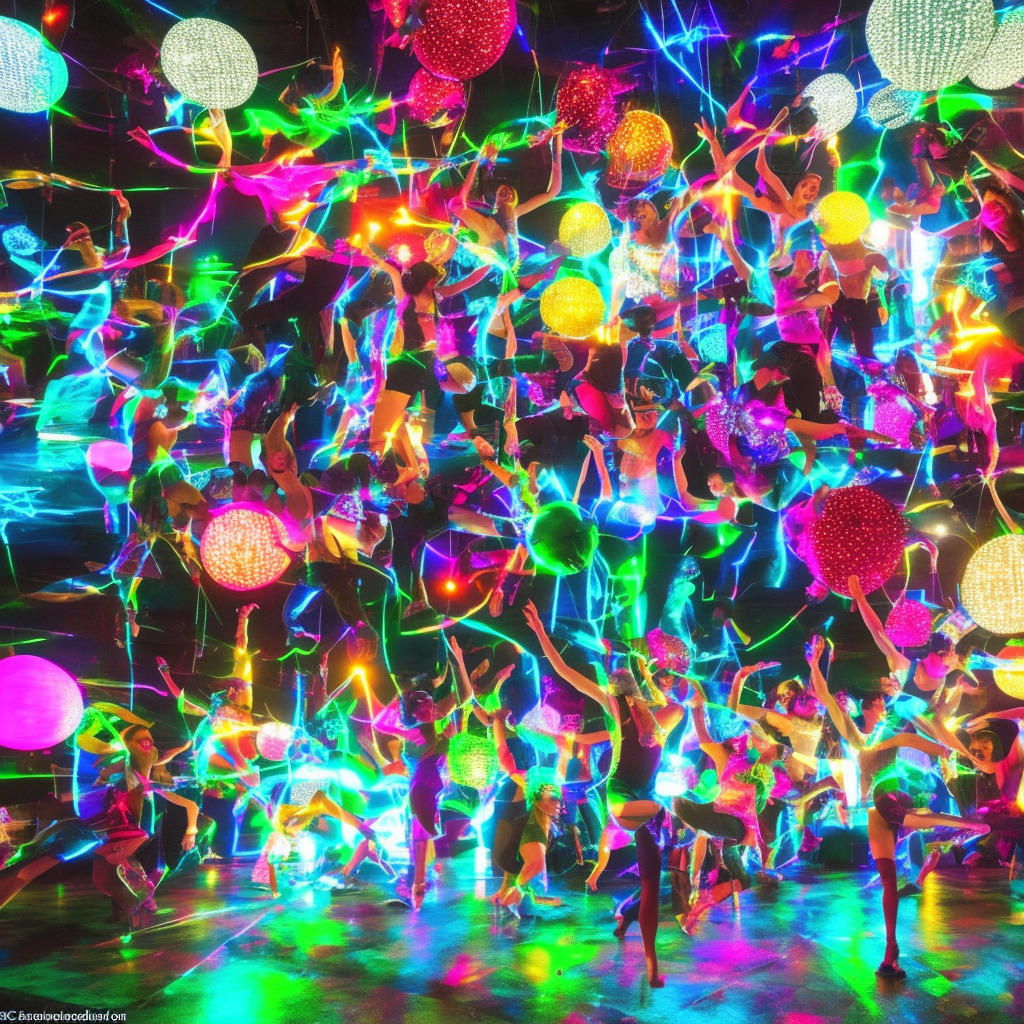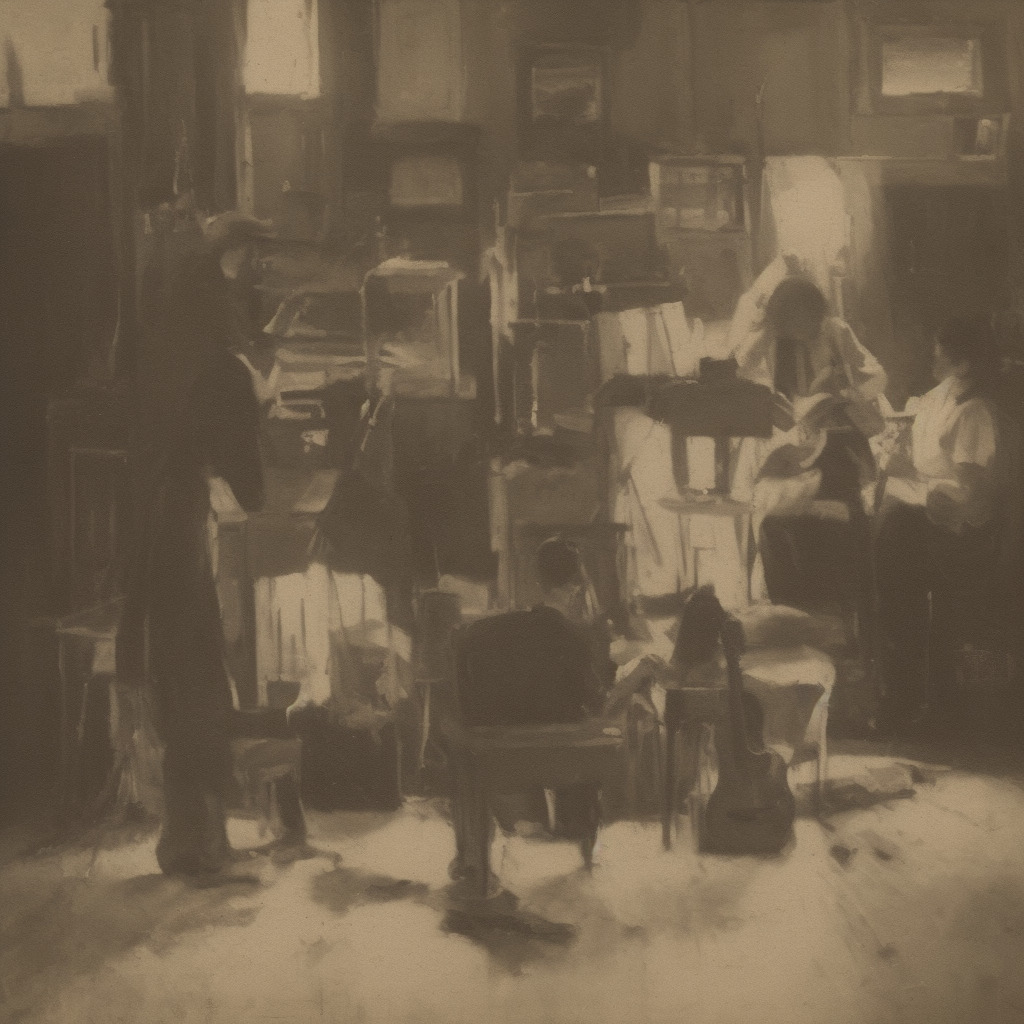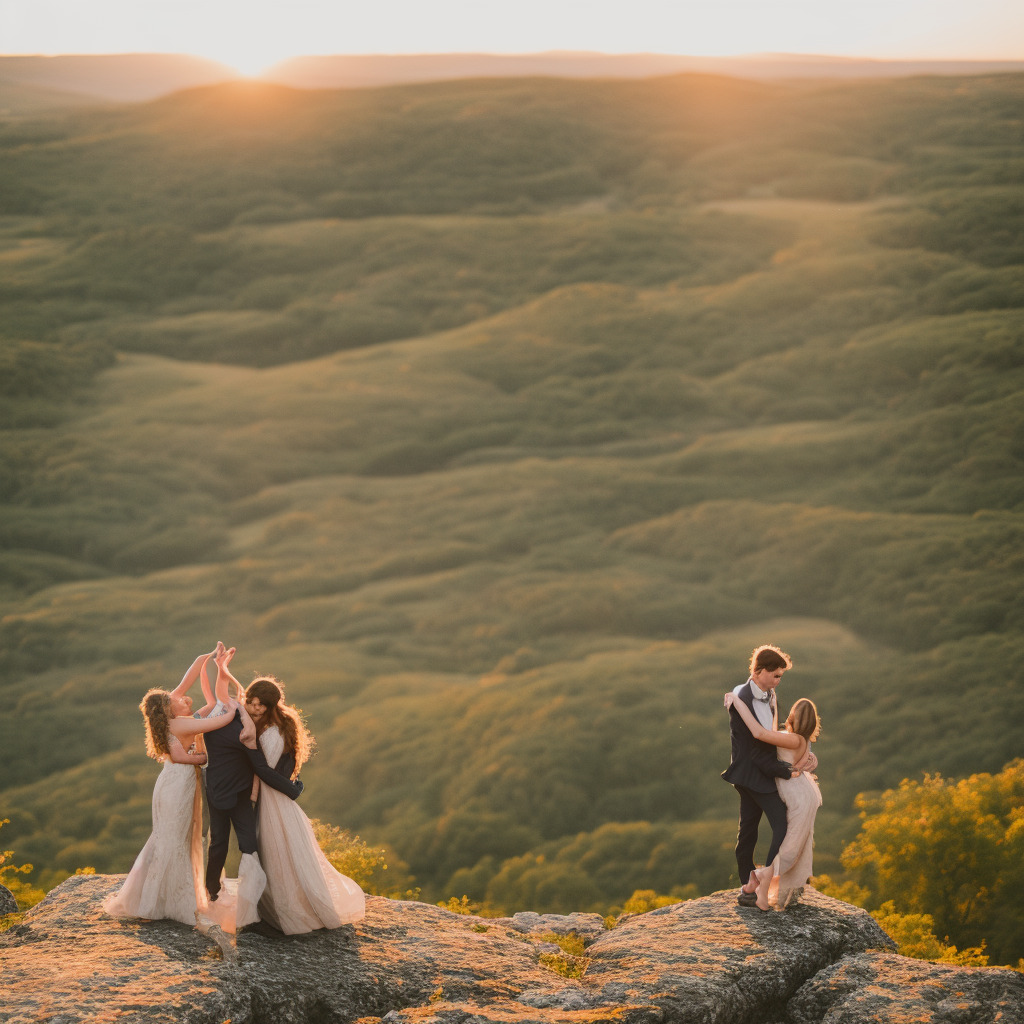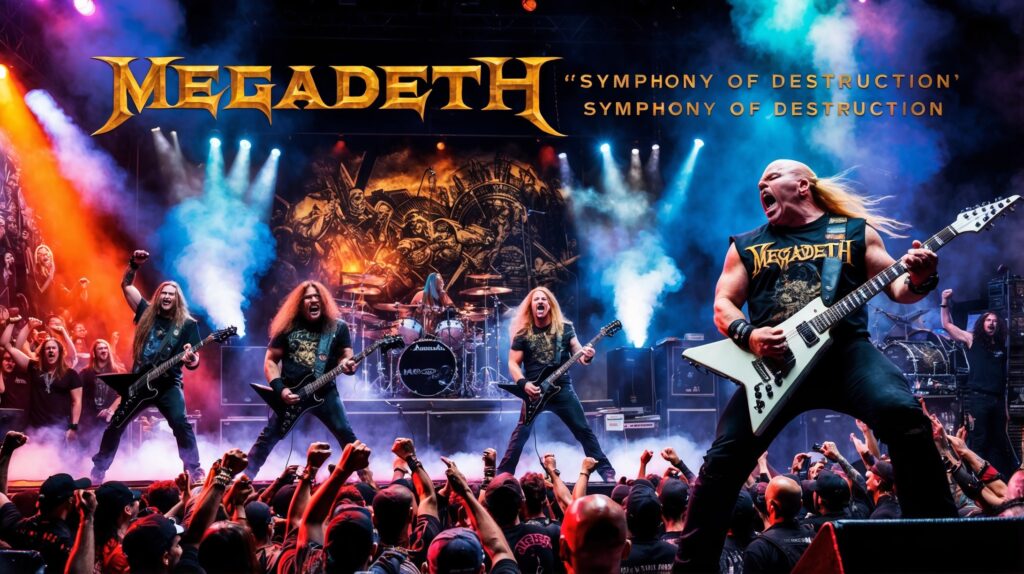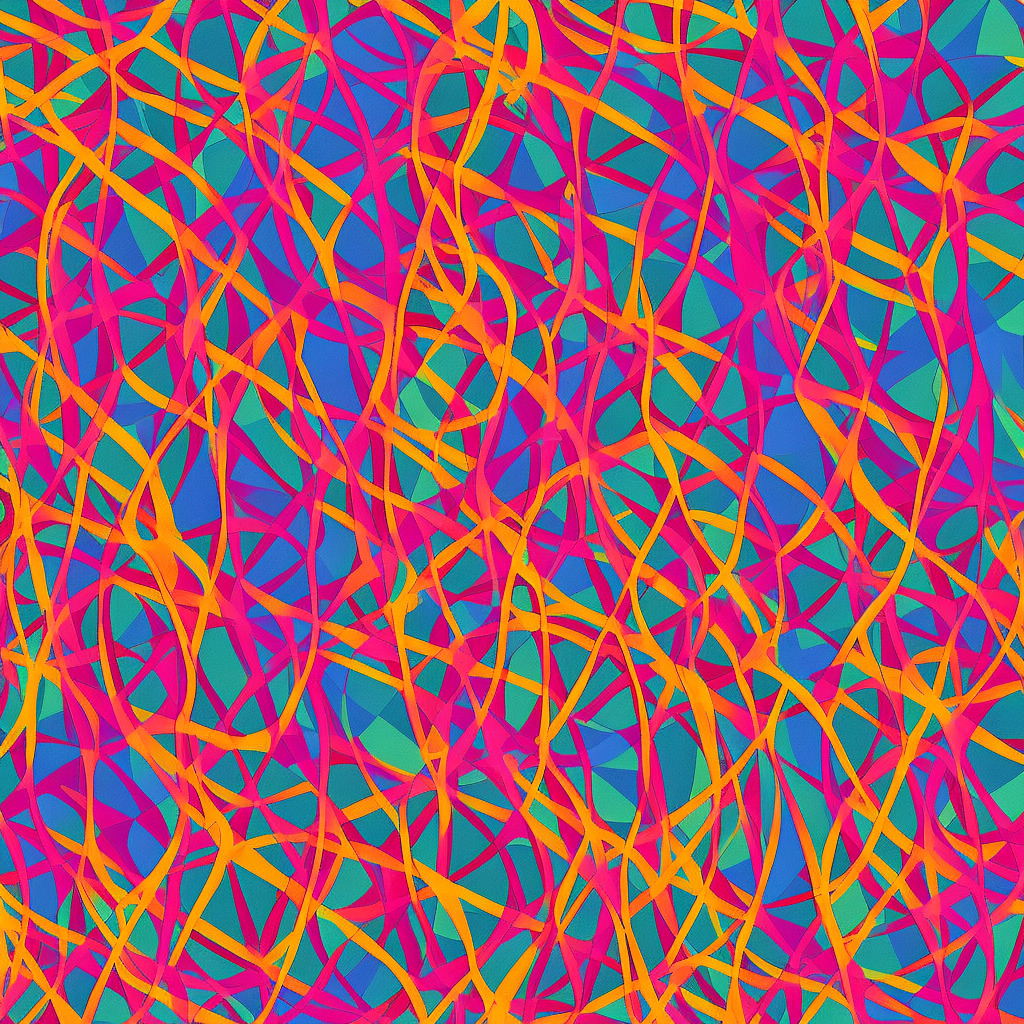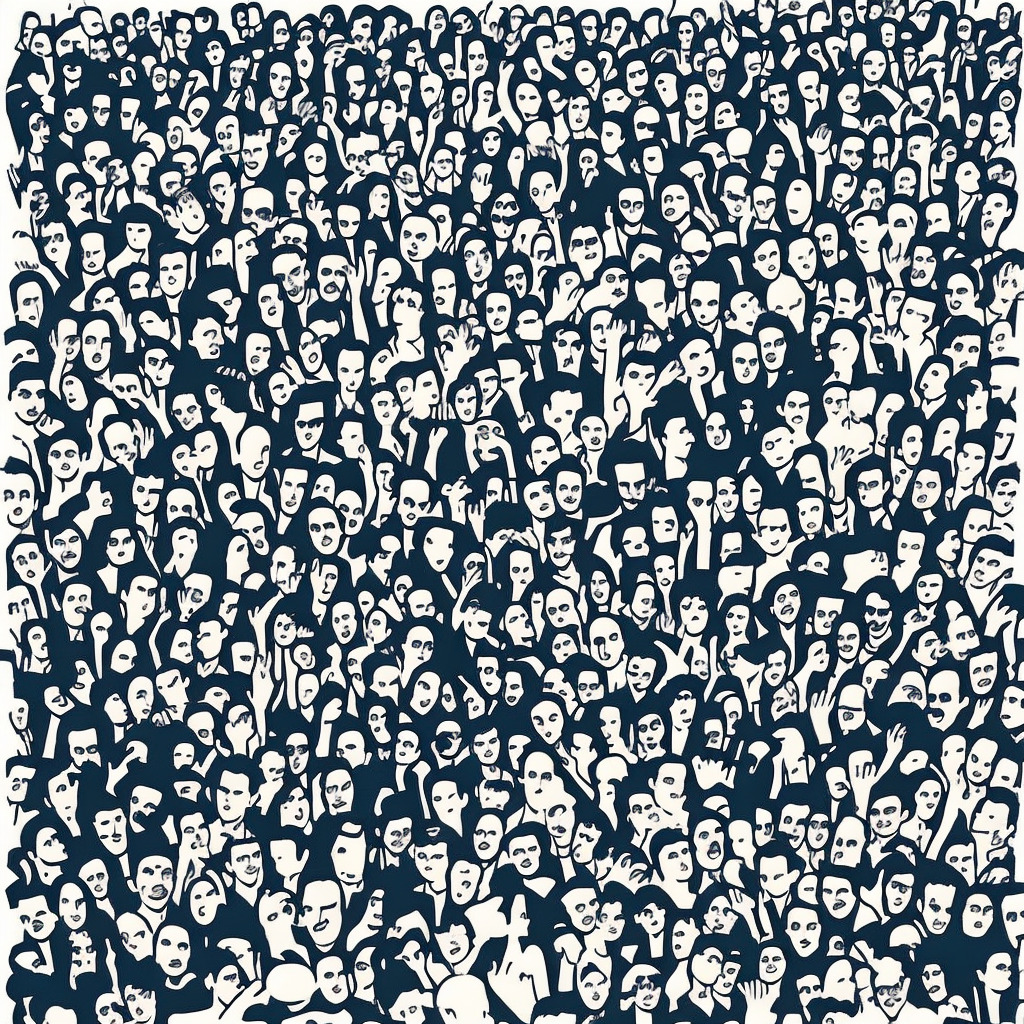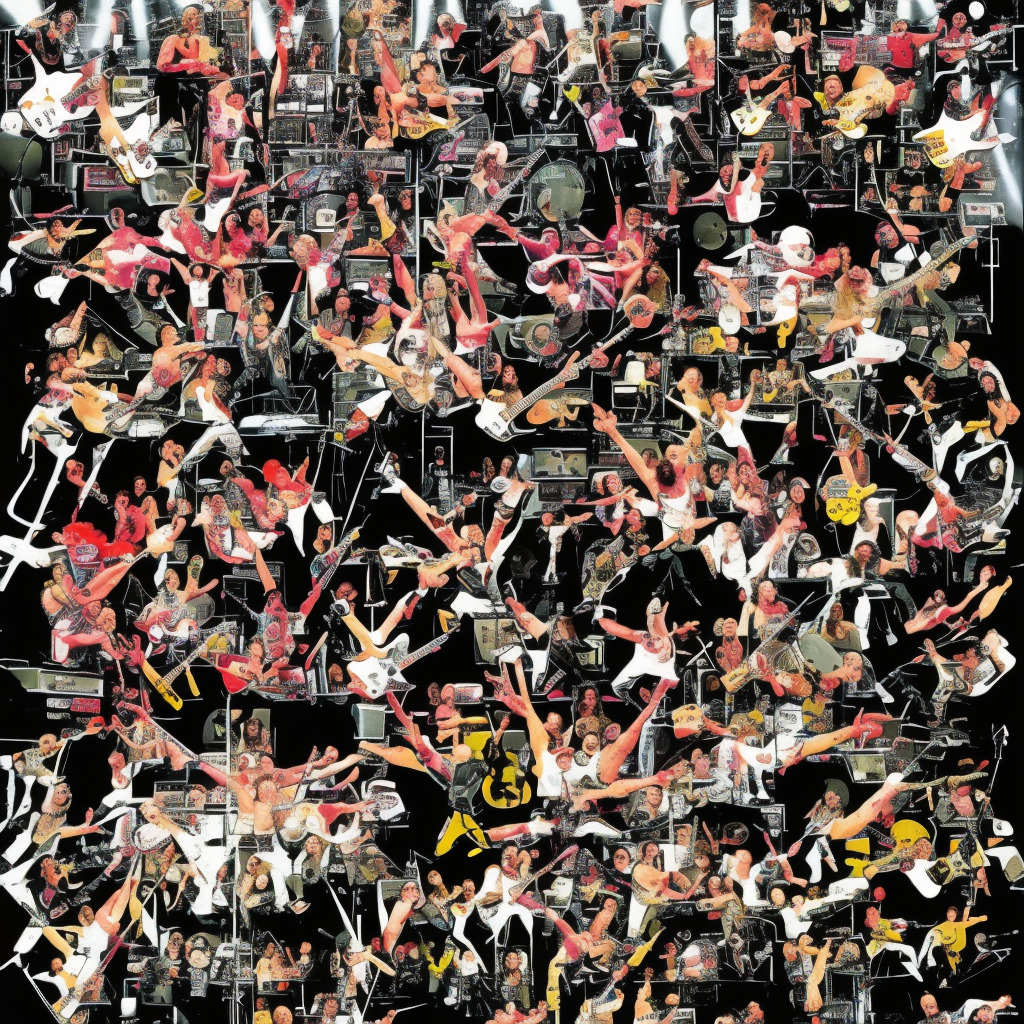🕺💃 Did you know that “Boogie Nights” by #Heatwave was actually inspired by a 🌟starry night sky? Get your groove on and dance under the stars! ✨🕺💃 #BoogieNights #FunFact #DiscoFever Read about it: tinyurl.com/k4ky983p
Disco Inferno: Heatwave’s Rise to Stardom
Heatwave: The 70s Disco Titans Whose Infectious Hits and Iconic Collaborations Withstood Lineup Tragedies and Time!
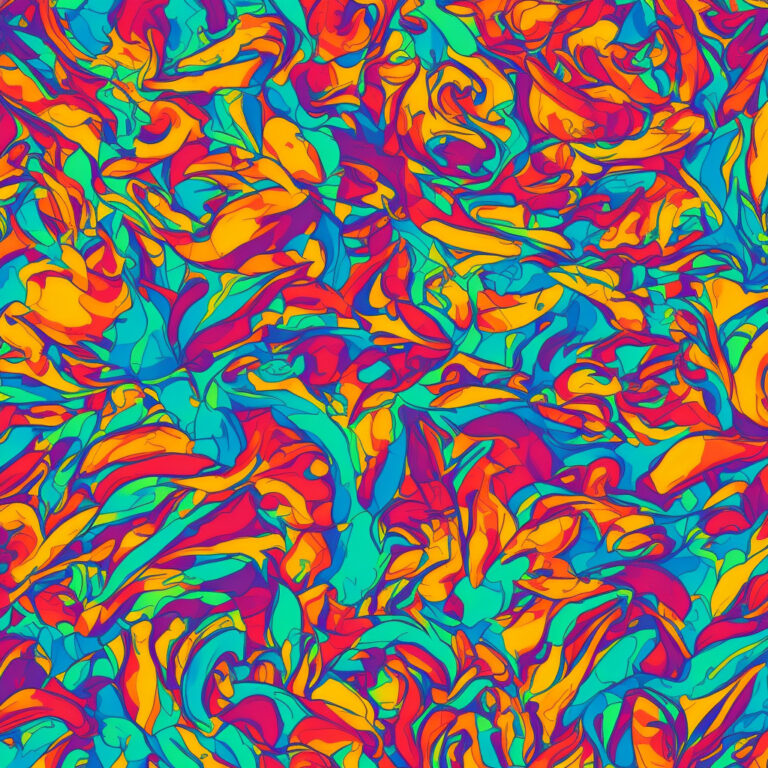
Heatwave, a funk/disco band that took the world by storm during the 1970s, was known for their infectious rhythms and smooth harmonies that made people want to get up and dance. The multi-national group was formed in 1975 by American serviceman brothers Johnnie Wilder Jr. (lead vocalist) and Keith Wilder (vocalist), along with British songwriter/keyboardist Rod Temperton. Later, they were joined by Jamaican bassist Mario Mantese, Swiss guitarist Eric Johns, Czechoslovakian drummer Ernest “Bilbo” Berger, and British guitarist Roy Carter.
The song “Boogie Nights,” released in 1977, was one of their biggest hits, reaching No. 2 on both the US Billboard Hot 100 and UK Singles Chart. The upbeat, catchy tune was a defining track of the disco era, and perfectly encapsulated the energy of the time. “Boogie Nights” featured on their debut album “Too Hot to Handle,” produced by the legendary Barry Blue, which also included other hits like “Always and Forever” and “Ain’t No Half Steppin’.”
However, it wasn’t all smooth sailing for Heatwave – they faced several lineup changes and tragedy, which derailed their success to some extent. In 1977, guitarist Eric Johns left and was replaced by William L. Jones, who also played keyboards. Another challenge came when Mario Mantese was tragically stabbed by his girlfriend, leaving him in a coma for a month, and eventually causing him permanent brain damage. Mantese was replaced by Derek Bramble. Despite these setbacks, Heatwave continued to make an impact on the music scene, with noteworthy collaborations like Michael Jackson’s iconic “Off The Wall” album, which Rod Temperton co-wrote and composed some of the tracks for, such as “Rock With You” and the title track “Off The Wall.”
Now, while Heatwave may have been a talented group, they were not immune to criticism. Some critics and music enthusiasts felt that their sound was overproduced and lacked the rawness that made other funk and disco acts stand out. Additionally, their later releases didn’t capture the same magic as their earlier work, causing their popularity to wane in the 1980s.
Despite the criticism and challenges, Heatwave managed to leave an indelible mark on the history of disco and funk music. Their contributions have been recognized in the form of accolades, such as their 2010 induction into the SoulMusic Hall of Fame. Today, their music continues to be celebrated, enjoyed, and sampled by new generations of musicians and music lovers alike.
Charting the Night Away
“Boogie Nights” by Heatwave: a timeless disco inferno that set global charts ablaze and redefined dance floor anthems in the ’70s.
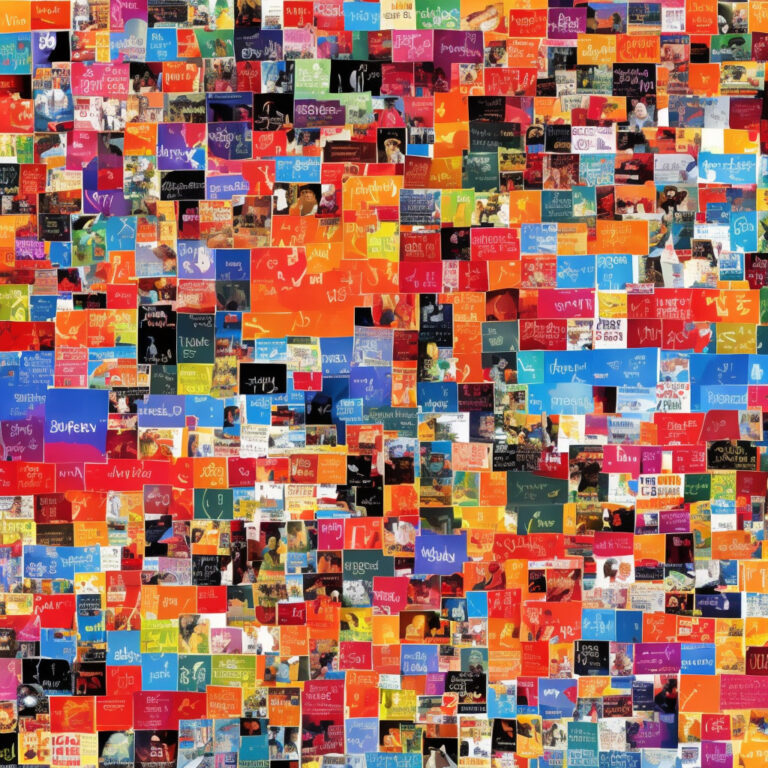
“Boogie Nights” by Heatwave proved to be a resounding success upon its release. The single was first unleashed upon the world on December 30, 1976, and it didn’t take long for it to set the dance floors ablaze. Initially, the track debuted on the Billboard Hot 100 chart at the 89th position, but it quickly skyrocketed up the rankings.
Thanks to its infectious groove and undeniable danceability, “Boogie Nights” reached its peak position of #2 on the Billboard Hot 100 in April 1977. It just narrowly missed the top spot, which was held by fellow disco hit “Don’t Leave Me This Way” by Thelma Houston. However, it did claim the #1 position on the Hot Soul Singles chart, proving its dominance in the realm of funk and soul.
In Heatwave’s home country of the UK, “Boogie Nights” also experienced chart success, reaching #2 on the UK Singles Chart. Furthermore, in Canada, the track managed to achieve a peak position of 5th on the RPM Top Singles chart. Clearly, the song’s popularity extended far beyond the borders of the United States.
An interesting piece of chart trivia about “Boogie Nights” is that it remained on the Billboard Hot 100 chart for an impressive total of 21 weeks. This feat showcases the song’s enduring appeal and the lasting impact it had on the music scene during that time.
In conclusion, “Boogie Nights” by Heatwave is a shining example of a song that not only connected with listeners from various countries but also defied the limitations of its genre. Its chart success, both in the US and abroad, is a testament to the timeless quality of this unforgettable disco classic.
Diving into the Groovy Lyrics
Boogie nights, oh
Boogie nights, oh
Boogie nights, ain’t no doubt we are here to party
Boogie nights, come on now, got to get it started
Dance with the boogie get down
Dance with the boogie get down
‘Cause boogie nights are always the best in town
Got to keep on dancin’, keep on dancin’
Got to keep on dancin’, keep on dancin’
Boogie nights, get that groove let it take you higher
Boogie nights, make it move set this place on fire
Dance with the boogie get down
Dance with the boogie get down
‘Cause boogie nights are always the best in town
Heatwave’s “Boogie Nights” lyrics perfectly capture the essence of the disco era, a time when music and dancing were at the heart of the social scene. The lyrics exude an infectious energy that is hard to resist, urging listeners to get on the dance floor and embrace the spirit of the boogie.
During the 1970s, when this song was released, people were ready to let loose, forget their problems, and just have a good time. The world was going through significant political and social changes, including the aftermath of the Vietnam War, the Watergate scandal, and the ongoing struggle for civil rights. Music provided an escape, and disco was the soundtrack to that escape.
The lyrics of “Boogie Nights” are simple and straightforward, focusing on the need to “dance with the boogie” and “get down.” They emphasize the importance of leaving all inhibitions behind and just enjoying the night. The catchy and repetitive nature of the lyrics also allows for a sense of unity and shared experience on the dance floor, as everyone sings along and collectively celebrates the joy of boogie nights.
Furthermore, the lyrics highlight the desire for connection and shared experiences that were a hallmark of the disco era. Nights spent dancing together, fueled by the pulsating rhythm of the music, allowed people from all walks of life to find common ground and momentarily forget the stresses of the outside world.
In summary, the lyrics of “Boogie Nights” by Heatwave encapsulate the spirit of the disco era, reflecting the desire for fun, escape, and a sense of unity on the dance floor. The song’s infectious energy and simple message continue to resonate with listeners today, reminding us of a time when music brought people together to dance the night away.
Visual Vibes of “Boogie Nights”
Dive into the nostalgic world of “Boogie Nights” by Heatwave and discover the visual interpretations by fans, from vintage disco compilations to synchronized light shows, keeping the groovy beat alive for generations.
Despite not having an official music video, the legacy of “Boogie Nights” by Heatwave has remained strong over the years, thanks to the imaginative visual interpretations by fans and other artists alike. The song’s infectious energy and groovy beat seem to inspire a wide variety of creative expressions, which has resulted in an array of unofficial music videos and tributes on YouTube and other video platforms.
One notable fan-made video features a compilation of vintage disco footage, complete with disco balls, synchronized dance moves, and vibrant outfits that perfectly capture the essence of the 1970s. This video, in particular, has garnered a significant number of views and positive feedback from Heatwave fans, who appreciate the nostalgic atmosphere it evokes.
Another popular YouTube tribute is a synchronized light show set to “Boogie Nights.” In this video, the creator intricately programs their home’s holiday lights to flash and dance in tune with Heatwave’s funky rhythm, creating a mesmerizing and festive experience for viewers. This tribute is a testament to the song’s enduring appeal and the innovative ways in which fans continue to engage with it.
Of course, the song’s history is also closely tied to the 1997 film “Boogie Nights,” directed by Paul Thomas Anderson, which borrowed its title and featured the track prominently in its soundtrack. Although not a music video per se, the film’s exploration of the late 1970s and early 1980s disco scene and adult film industry provides an interesting cinematic context for the song.
In conclusion, while there may not be an official music video for “Boogie Nights” by Heatwave, the rich tapestry of fan interpretations and its use in popular culture more than make up for it. These creative visuals showcase the enduring impact of the song and continue to engage and entertain its fans to this day.
The Mastermind Behind “Boogie Nights”
Rod Temperton, the revered composer behind Heatwave’s disco anthem “Boogie Nights,” is a man of many talents indeed. This English songwriter, record producer, and musician has contributed greatly to the world of music. Notably, Temperton’s songwriting prowess can be experienced in Michael Jackson’s 1979 hit “Rock with You,” which reached number one on the US Billboard Hot 100 chart. Additionally, he composed “Off the Wall,” the title track of Jackson’s breakthrough fifth solo album, showcasing his exceptional ability to create catchy tunes and memorable melodies. Temperton’s contributions to the music world have certainly earned him a place among the most respected and influential figures in the industry.
Awards, Accolades, and Beyond
“Boogie Nights” – a timeless dance anthem with chart-topping success, gold certification, and a lasting impact on films, TV shows, video games, and artists’ renditions.
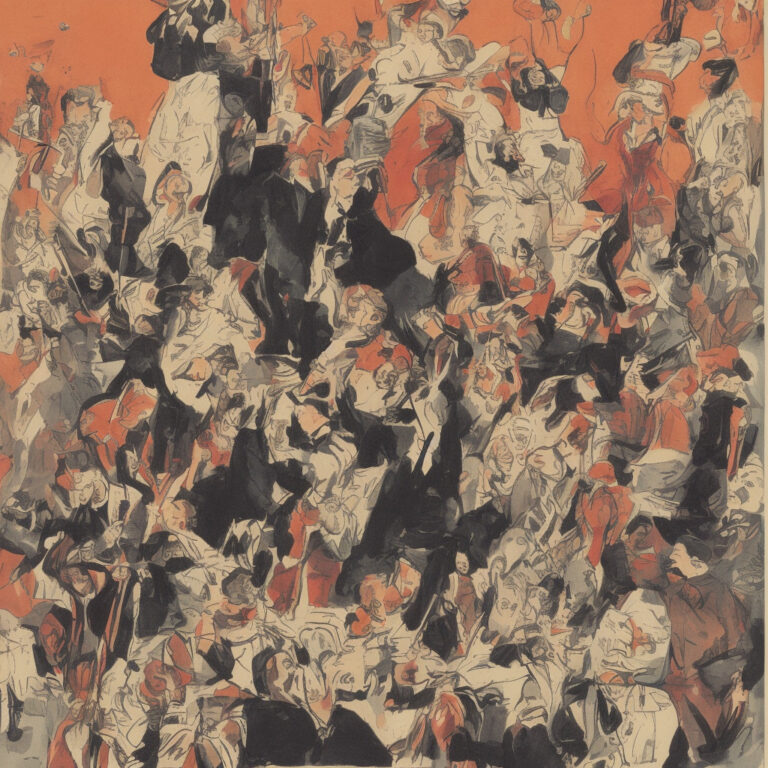
“Boogie Nights” by Heatwave took the music world by storm when it was released in 1977 as part of the band’s debut album, ‘Too Hot to Handle’. The song, penned by Rod Temperton, not only became a dance floor anthem but also garnered numerous awards and accolades over time.
The infectious groove of “Boogie Nights” quickly caught the attention of listeners and climbed the charts worldwide. It reached an impressive No. 2 spot on the Billboard Hot 100 and No. 3 on the UK Singles Chart. The track also received gold certification by the RIAA in the US, making it one of Heatwave’s most successful songs.
But the success of “Boogie Nights” didn’t stop there. Throughout the years, the song has found its way into various movies, TV shows, and even video games. Its irresistible rhythm made it a natural choice for films like 1997’s “Boogie Nights,” directed by Paul Thomas Anderson, which used the track as part of its iconic soundtrack. The song has also made appearances in episodes of popular TV series, including “American Dad” and “Cold Case,” and was featured in the video game “Grand Theft Auto: Vice City Stories.”
Given the immense popularity of “Boogie Nights,” it’s no surprise that the song has inspired several cover versions. Among the most notable is a rendition by KC and The Sunshine Band, who put their own spin on the track for their 1998 album “I’ll Be There for You.” Another noteworthy cover comes from British comedian and actor Rowan Atkinson, who performed a hilarious lip-sync of the song during a 1987 Comic Relief event.
All in all, the enduring appeal of “Boogie Nights” speaks to its timeless quality as a dance classic. Whether it’s captivating new generations through film, TV, and video games, or inspiring fresh interpretations from fellow artists, this iconic track remains an essential part of the global music landscape.
Dissecting the Groove: A Deep Dive into the Music
“Boogie Nights” by Heatwave is a dancefloor staple that’s sure to get people moving. The song is built around a formula that blends funk and disco elements, creating a timeless and infectious groove. Let’s take a closer look at the musical structure that makes this song an enduring classic.
The song is written in the key of A minor, which gives it a slightly moody and mysterious quality. This is balanced by the upbeat tempo of approximately 120 beats per minute (BPM), which is perfect for dancing. The tempo is kept steady throughout the track, driving the infectious rhythm that propels the song forward.
The chord structure of “Boogie Nights” is relatively simple, relying on a repeating four-chord progression (Am7 – D9 – Gmaj7 – Cmaj7) to carry the melody. This progression creates a sense of movement and energy, as each chord change propels the listener to the next. The chords are played with a syncopated rhythm, which adds to the danceability and groove of the track.
One of the defining features of “Boogie Nights” is its use of syncopated rhythms throughout the song. The drums and bass guitar lay down a solid foundation, with the bass emphasizing the “and” of beats 2 and 4, giving the song a strong sense of forward momentum. The rhythm guitar adds to this effect, playing staccato chords on the offbeats, creating a choppy and funky rhythm that’s impossible not to dance to.
The horn section is another key element that sets “Boogie Nights” apart. The arrangement features tight, punchy brass hits that accentuate the groove and provide a powerful sonic contrast to the rest of the instrumentation. These horn stabs give the song a lively, almost celebratory feel, and their strategic placement in the arrangement keeps the energy level high throughout the track.
The vocals in “Boogie Nights” are characterized by their smooth delivery and tight harmonies. The lead vocalist demonstrates impressive range, effortlessly transitioning between chest voice and falsetto to deliver the catchy hooks and powerful choruses. The backing vocals provide a rich texture, with harmonies that blend seamlessly with the lead, adding depth and complexity to the song’s melody.
In conclusion, “Boogie Nights” by Heatwave is a masterclass in blending funk and disco elements to create a truly infectious and timeless groove. Its irresistible combination of syncopated rhythms, tight horn arrangements, and smooth vocals has made it a dancefloor staple for decades, and its musical structure ensures that it will continue to delight listeners and dancers for years to come.

